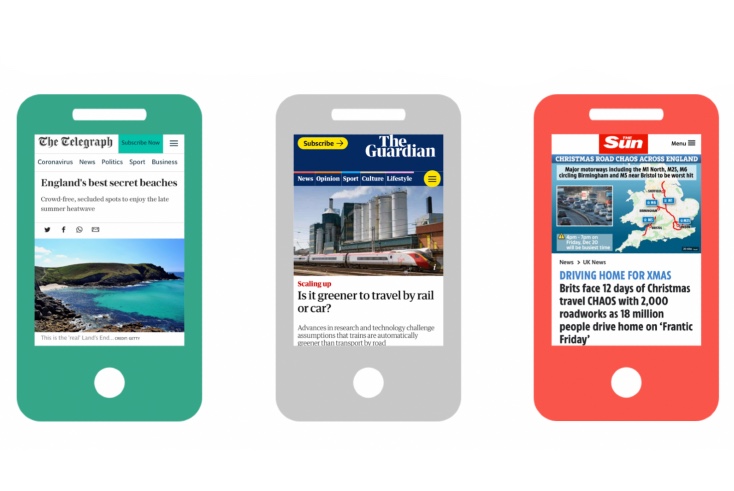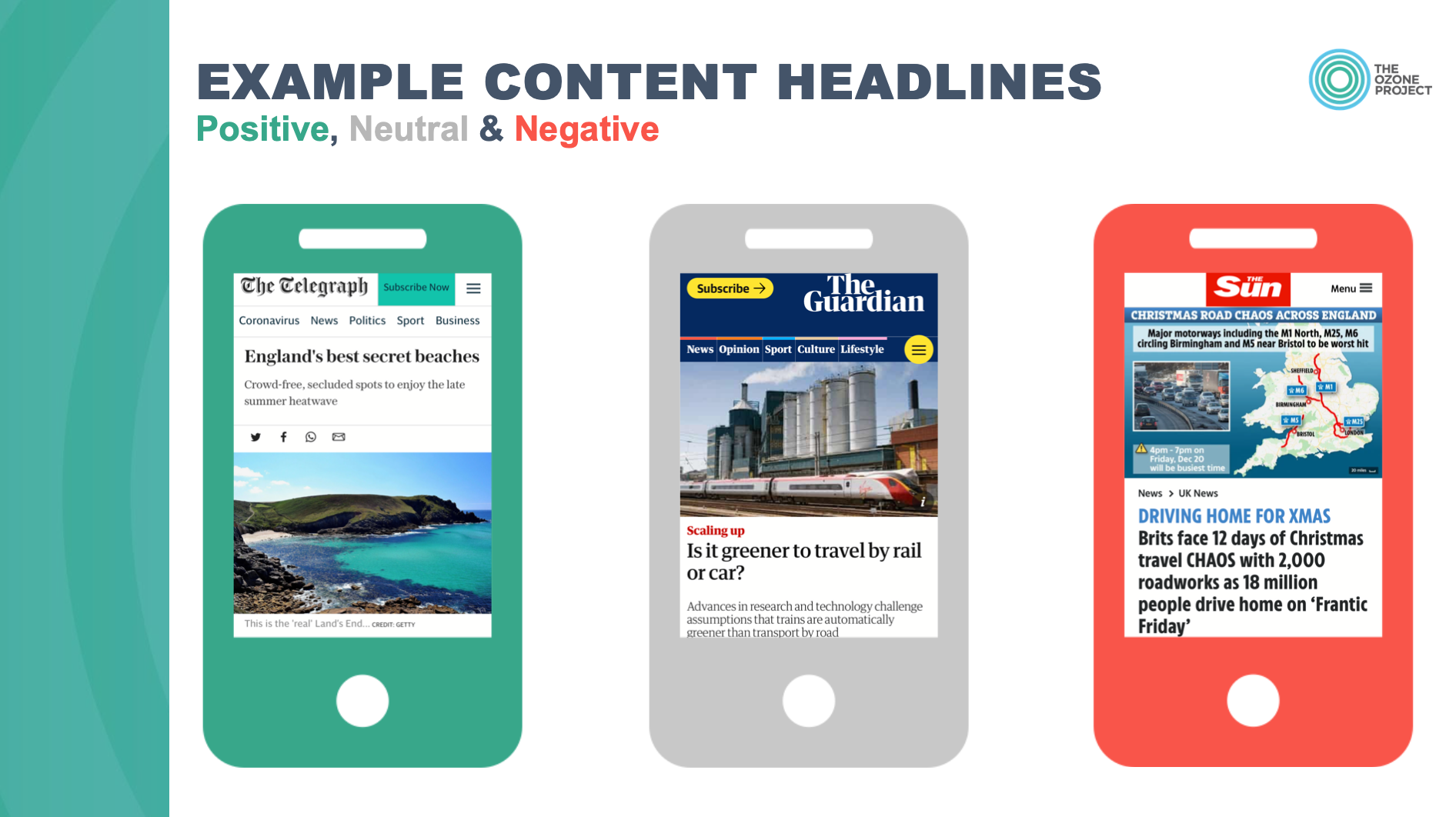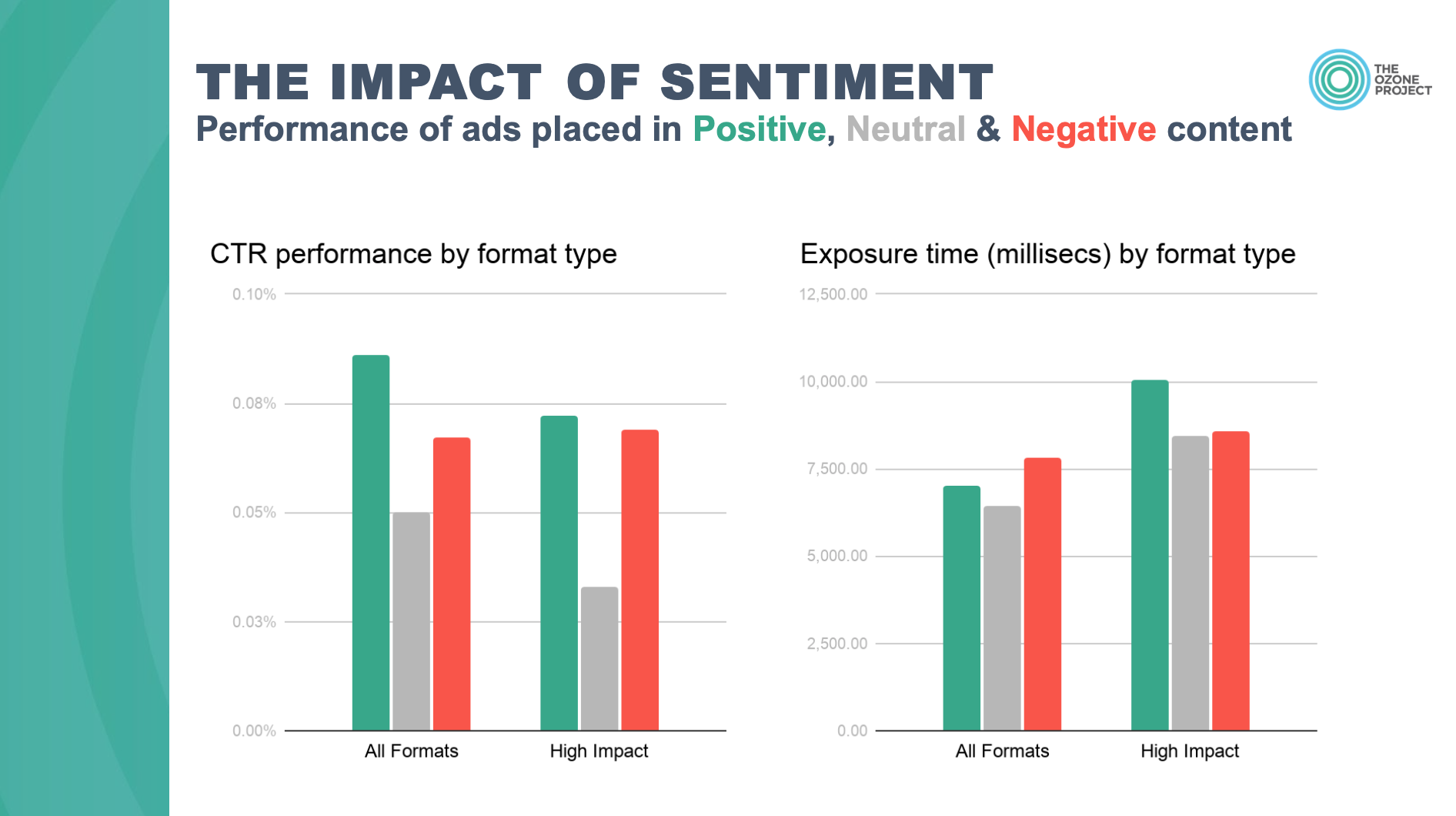Study reveals the power of sentiment in campaign optimisation

According to new research, there is no downside to advertising appearing in negative sentiment – yet brand safe – content. The Ozone Project’s chief revenue officer, Craig Tuck, explains.
Deep understanding about the context in which digital campaigns appear is critical for advertiser success.
At the Ozone Project, we’ve been fortunate to partner with the brilliant teams at AA and Goodstuff to analyse the impact of the differing sentiment of premium publisher content on actual results.
The contextual impact
Before delving into the detail, we should recognise past studies such as Newsworks’ ‘Hard News Project’ that demonstrated no difference in responses to advertising in hard and soft news contexts.
Our goal was to take this a step further and understand nuances in response, within content that is contextually-relevant to the client brief, yet varying in tone and sentiment.
This study also takes the conversation beyond brand safety – one particularly at the fore of marketers’ minds this year – into deeper aspects of brand suitability. Premium publishers are, by definition, safer spaces for brands thanks to editorial governance and regulation, and these results demonstrate the sentiment’s impact in content that is already deemed brand safe.
Measuring the impact of sentiment
So how did we do it? The methodology behind this AA case study falls into three distinct stages; Classification, Scoring and Application.
Firstly, Ozone’s platform classifies all content, on every page, across our portfolio of premium sites, to understand both type and sentiment. Initiated in near real-time from when we see a new page, the data from this classification process can inform targeting (both contextual and behavioural), brand safety and insights.
Step two is to score the content based on sentiment. Every single word and phrase on a page – the full page, not just the URL – is scored against positive, neutral and negative sentiment. Taking an aggregate of these scores we can understand the overall sentiment of any given article.
Finally, these sentiment scores can be used to analyse ad campaigns and understand how varying styles of content impact performance. This knowledge and insight can influence future planning; be it testing creative strategies, refining targeting, or reducing blocks on different content types.
What does positive, neutral & negative content look like?
Understanding sentiment within brand-safe content is largely about nuances.
For example, thinking about articles most relevant to AA, a ‘positive’ sentiment story about travel might include the editor’s pick of breathtaking spots for a UK getaway, while ‘neutral’ is more likely to be balanced, factual content, with minimal emotional response. When it comes to ‘negative’ sentiment, this could be characterised by articles about major traffic congestion – exactly the type of content brands may instinctively want to avoid.

This campaign for AA delivered over five million impressions across Ozone’s network, and these impressions were evenly split across positive, neutral and negative content.
What we learned
Our primary takeout is that there is no downside to advertising appearing in negative sentiment, yet brand safe, content, as demonstrated against two distinct measures:
1. Ads placed in both positive and negative sentiment content delivered greater CTRs than neutral sentiment
2. Ads placed in both positive and negative sentiment content are exposed to the user longer than those in neutral environments
The inherent logic is that emotive stories and articles are more likely to get a reader’s attention, ultimately leading to greater advertising outcomes. The AA campaign ran across a number of formats, all of which saw ads placed in emotive sentiment – positive or negative – outperform those in neutral sentiment.

Interestingly, we saw positive sentiment drive slightly higher levels of CTR across all campaign formats, while higher levels of exposure overall was seen across those placed in negative sentiment content. We also saw the greatest variance, positive or negative, delivered by high impact formats.
The power of the premium environment could also be seen in the campaign’s dwell times being 4x greater than those seen through the open exchange – another indicator of the greater engagement delivered through premium publisher websites.
We also looked at the impact of this campaign on AA’s brand with a study delivered in conjunction with Brand Metrics. While across all measures this campaign delivered a 4.2% point brand lift, the impact of the campaign on readers’ action intent was by far the greatest, indexing at 172 versus this advertiser’s category norm (based on 63 other campaigns).
“This study moves on the debate from brand safety and opens up questions on the nuances in premium content,” says Dave Carpenter, head of digital at Goodstuff.
“Advertising should provide positive impact to the end user and this study highlights that whether that is in the face of negative news or supplementing positive stories, there is intrinsic value to brands here.
“At Goodstuff, we truly believe in the benefits of supporting quality, professionally produced news content and this study shows that there is a lot of brilliant inventory currently being overlooked by advertisers. Whilst brand safety is always paramount, there is nuance in this space and a lazy blanket ban on content that is deemed unsafe will mean that you miss out on quality inventory and potential customers.
“We applaud our good friends at AA for taking the plunge to understand these nuances and look forward to continuing to push boundaries with them.”
Putting this into practice
At Ozone, we believe contextual understanding is a hugely powerful tool in digital campaign planning and the ability to analyse performance through additional measures such as sentiment only deepens this.
While we can already ensure advertising hits the right people in the right environment, the application of sentiment analysis can help brands apply the most suitable messaging in content of differing tone.
We believe studies like this will further demonstrate to advertisers how content of varying emotion will be a powerful addition to their marketing toolkit – especially when applied in brand-safe and high attention environments.




